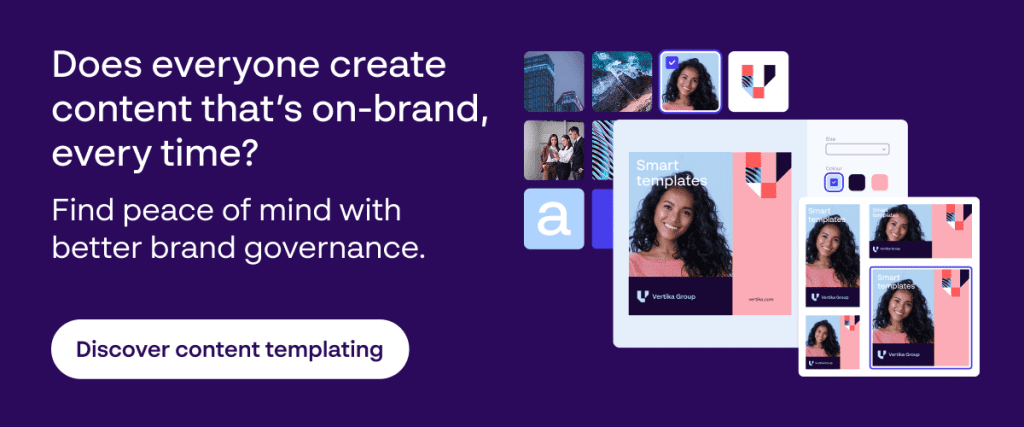Consistency isn’t optional – it’s foundational. How your brand looks, sounds, and behaves when it shows up in the world directly shapes how it’s remembered. It’s critical that people encounter the same, recognizable identity across all marketing and advertising materials.
But how do you maintain control when so many different people are creating content across teams, regions, formats and multiple channels?
Digital design templates provide a practical, scalable solution, allowing marketing teams to streamline digital content creation while at the same time protecting brand identity.
Do design templates limit creativity? Debunking the myth
It’s a common concern. Some creatives see templates as restricting their freedom – a “production line” approach that stifles originality. But effective brands already put limitations on designers, through clearly defined guidelines. Templates simply turn those rules into tools, so every asset reflects your identity.
In fact, templates often lead to increased creativity, not less. By freeing designers from repetitive production work, they allow more time for high-impact, strategic projects – where the real original thinking happens.
Key benefits of using digital design templates for marketers
Done right, digital design templates don’t just secure brand consistency – they enable you to deliver content creation services faster and more efficiently than ever before. Here’s how:
- Anyone can create branded assets – Templates enable any team member to produce studio-quality materials, ranging from signage to videos to social media posts.
- Brand protection is built in – Critical elements like logos, fonts, and color palettes are “locked” while features such as images, text and calls to action can all be changed.
- Localization is easy – Teams can adapt content to match local languages, formats and cultural norms in minutes rather than days.
- Assets can be produced on-demand – Flexible template technology allows users to define asset size and create the file type they need immediately.
In short, it is a marketer’s dream – a world where any colleague can create their own collateral quickly, without any danger of straying off-brand.
4 steps to successful content creation with design templates
1. Define essential template elements for multi-channel content
The options can be overwhelming at first. Stay focused by considering the elements you need for your template before you even start. It’s usually best to go with the simplest option. You should also make sure your template is flexible enough to work across multiple channels and asset types.
2. Customize design templates to match your brand guidelines
Off-the-shelf options can be a good starting point. But in the long term, you should be customizing your templates in line with your brand guidelines. Your design team have a critical role to play in this process. With their oversight, templates can become more than simple content marketing tools – they can be true brand enablers.
3. Focus on clear messaging and content optimization within templates
Don’t get stuck obsessing over layouts. Use templates as a solid design base, then focus your time on writing strong, clear messaging, testing variations, and making content work harder. Templates take care of the format – you and your team can focus on results.
4. Integrate design templates into your long-term content creation strategy
Templates aren’t a shortcut – they’re a sustainable, scalable system. For small or growing brands, they offer enterprise-level structure at a fraction of the cost. For global brands, they unlock alignment across geographies and teams. And with Papirfly’s Templated Content Creation tools, you can make them an integral part of your brand ecosystem. Not only do you get complete control over how you create, adapt, and manage your design templates – you also empower all your team members to produce high-quality, on-brand collateral every time.
Empower your team with design templates for content creation tools
Discover how Papirfly’s Templated Content Creation solution can help you empower your people while protecting your brand.

